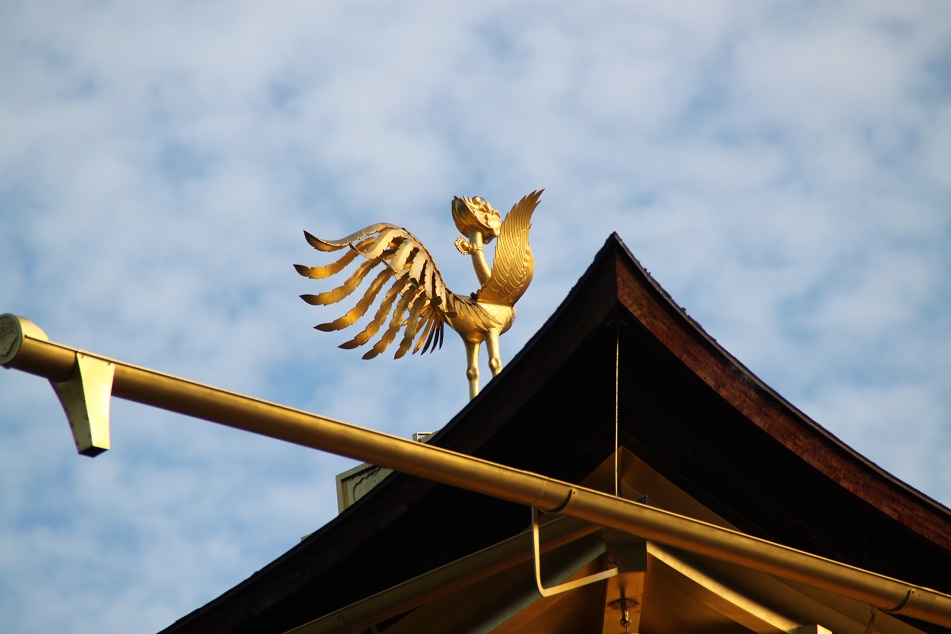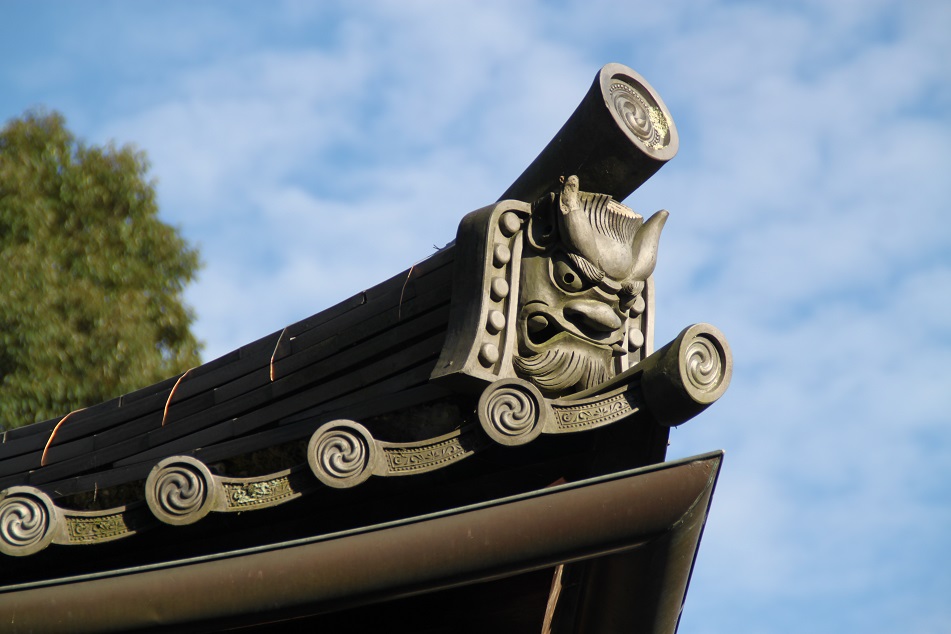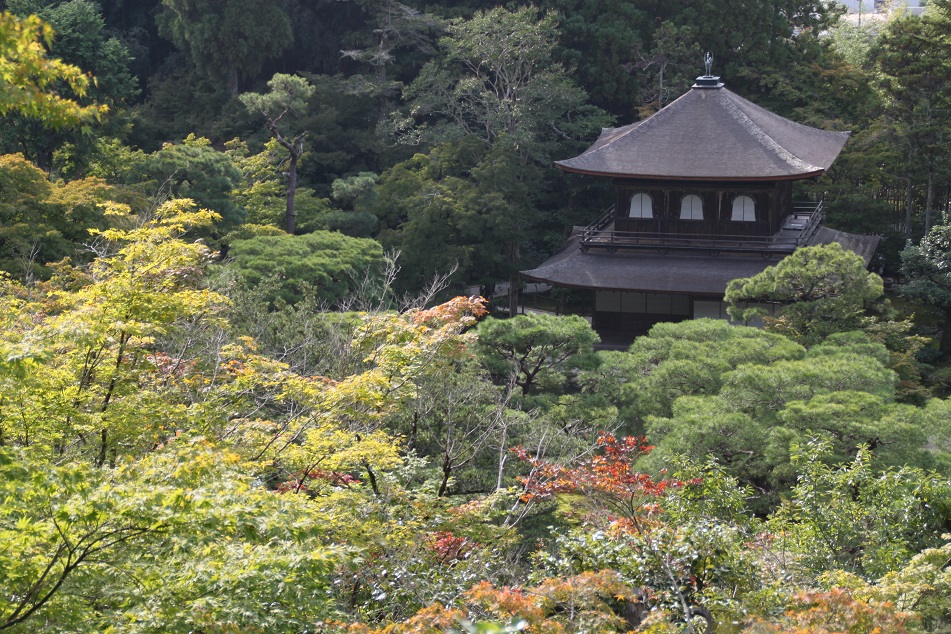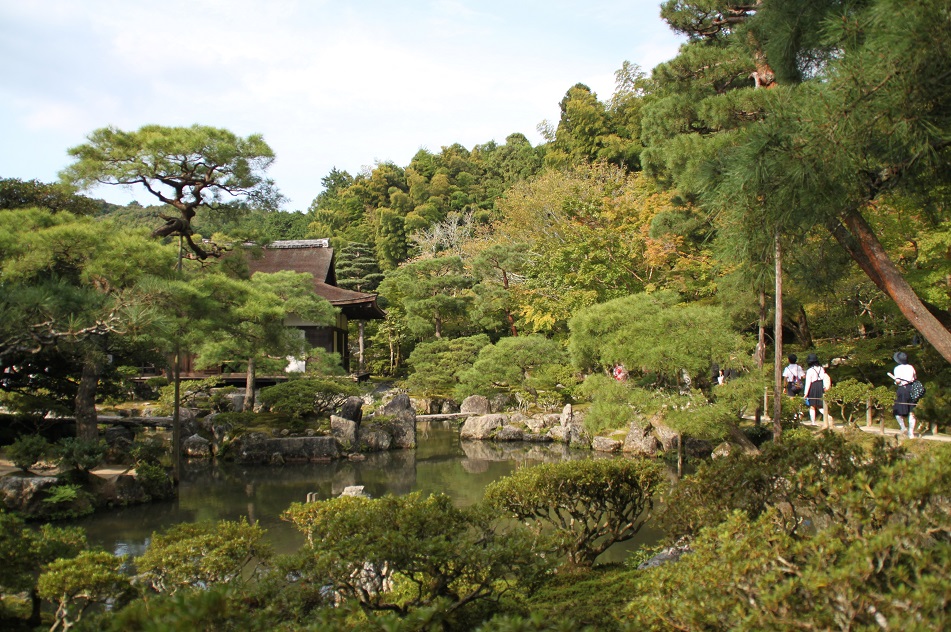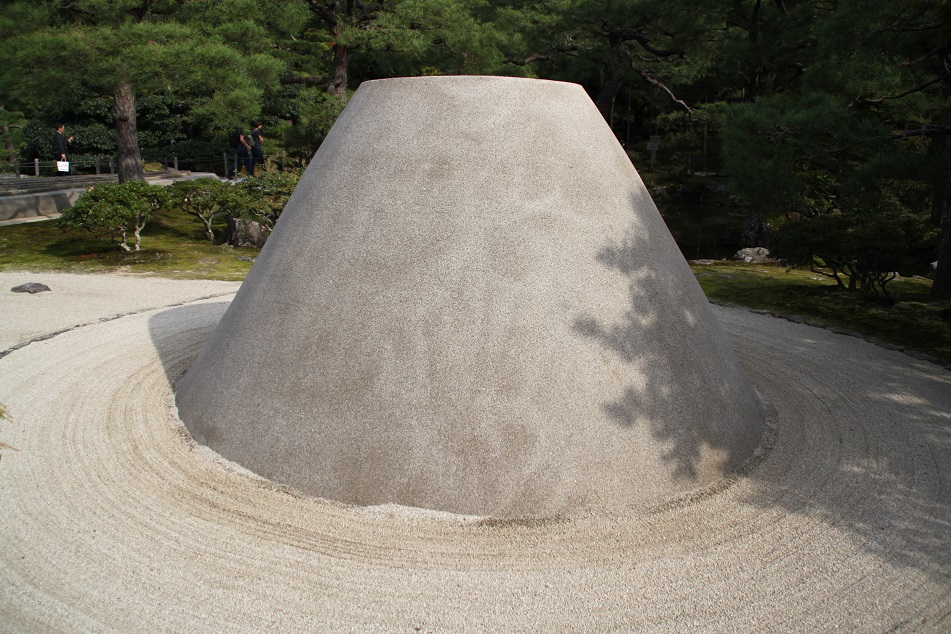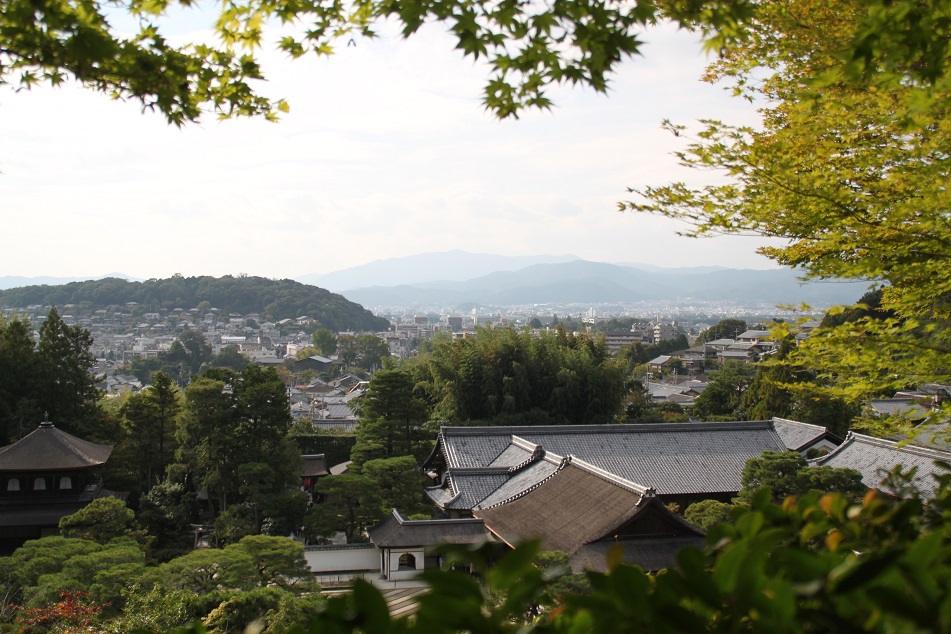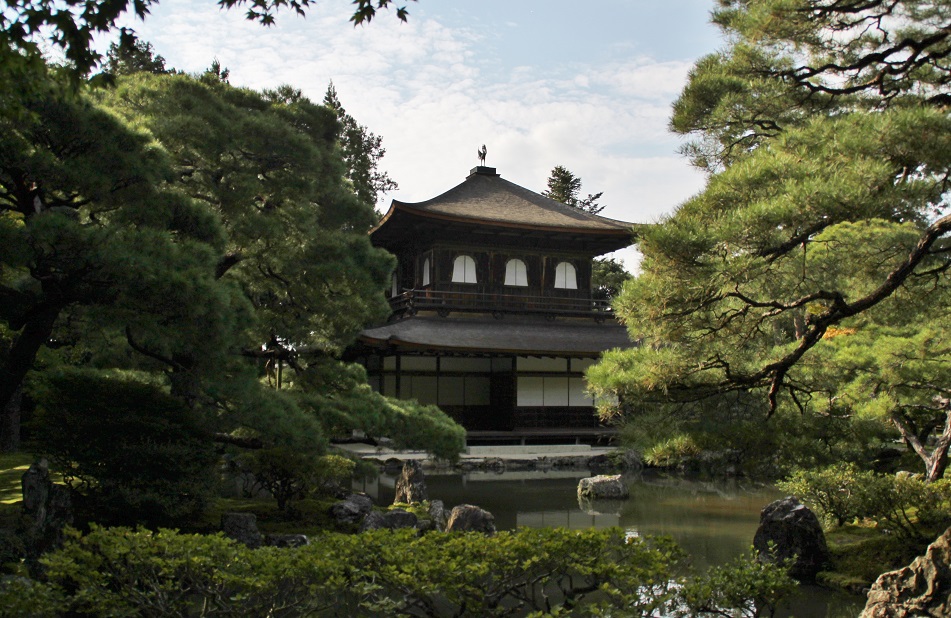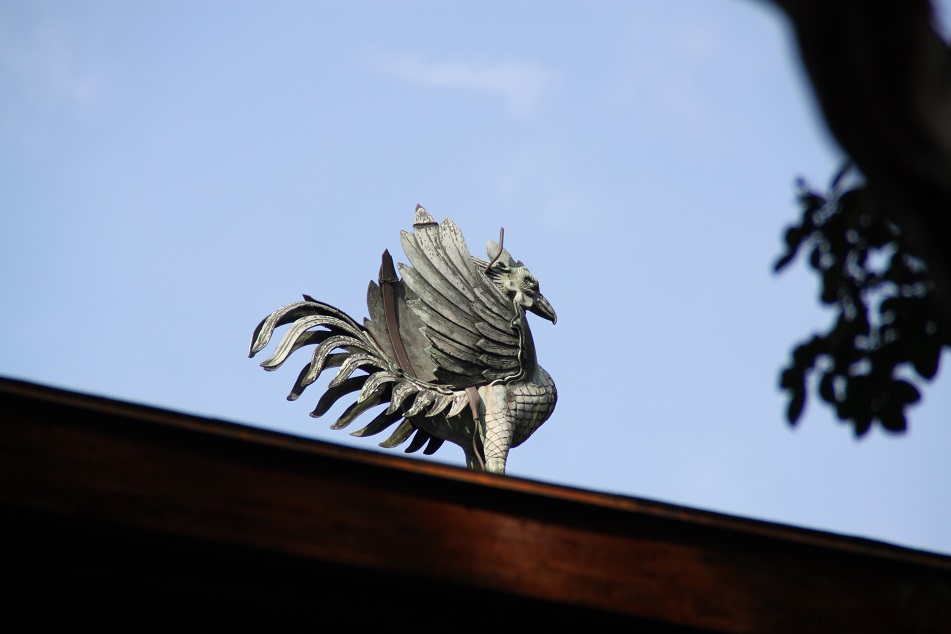At midday in Kyoto James and I were enjoying a quirky Japanese TV show – a miscellany of over-excited hosts, cartoonish animation, and video game-ish sound – sitting cross-legged on the comfortable tatami mat inside our hotel room. At the same time on our laptops we were looking up the city’s weather forecast for the rest of the day. “Apparently it’s going to be sunny this afternoon,” James spoke up, followed by an impulsive suggestion, “do you want to go back to Kinkaku-ji?”
The Temple of the Golden Pavilion (Kinkaku-ji) was always meant to be one of the highlights of our trip to the Japanese ancient capital, so much so we went there the first morning after we arrived in Kyoto. On our first visit, hoping to beat the crowds, we were already at the front gate of the temple compound before it was open. Also waiting were groups of Japanese schoolchildren and a few other tourists. As soon as the gate was opened, everyone lined up in an orderly manner then walked briskly toward a pond where a three-story gold-plated pavilion stood just across the calm waters. Even on a cloudy day like that morning, Kinkaku-ji’s refined splendor radiated in the air, with visitors at the other side of the pool vying for the best spot to take photos of one of Kyoto’s most iconic landmarks. For modern-day visitors, the Golden Pavilion’s facade exudes a sense of tranquility and peace. But its long history is anything but.
Completed in the late 14th century, Kinkaku-ji was purchased by Ashikaga Yoshimitsu, a shogun (military leader who was also the de facto ruler of Japan) of the Muromachi period, as his villa. After his death, as indicated in his will, Yoshimitsu’s son turned the villa into a temple of the Zen sect of Buddhism. However, more than half a decade after Kinkaku-ji’s completion when the shogun at that time, Ashikaga Yoshimasa (Yoshimitsu’s grandson), was considering retirement, Japan was about to face a difficult time in its history. This plan sparked a dispute between Hosokawa Katsumoto (one of the deputies to the shogun) and his father-in-law Yamana Mochitoyo (a daimyo, feudal lord) over who should succeed the shogun. The Hosokawa clan supported the shogun’s brother as his successor, while the Yamana clan chose the infant son of the shogun.
Skirmishes began to develop between the two clans and their supporters, leading to a 10-year civil war known as the Onin War. Among the victims of the war were almost all the buildings in Kinkaku-ji’s compound, leaving the golden pavilion itself as a sole survivor. While Kyoto was engulfed in the war, Ashikaga Yoshimasa was more interested in cultural activities, as well as planning for Ginkaku-ji, a silver pavilion to rival his grandfather’s golden pavilion. However, the war forced construction on Ginkaku-ji to come to a halt, chiefly with regard to the application of silver foil, leaving the main structure’s wooden elements exposed. In fact, what visitors see today is exactly how Yoshimasa last saw it before his death. Nevertheless, the silver pavilion’s unfinished appearance has become a prime example of a Japanese aesthetic later known as wabi-sabi, beauty in transience and imperfection.
More than five centuries after its completion, and five years after Japan’s defeat in World War II, an arson attack completely burned down Kinkaku-ji. The perpetrator, a novice monk who was later diagnosed with mental illnesses, died six years later of tuberculosis. An extensive reconstruction was carried out in 1955, with the new structure built as close as to the original blueprint. Several decades and further restoration works later, today Kinkaku-ji stands elegantly inside a lush Japanese garden which together emanate peace and tranquility once again.
For obvious reasons I said yes to James’ idea of going back to the golden pavilion that sunny day, while wondering how its gilded facade would reflect the soft afternoon sun to the calm pond. After a bus ride across the city and a short walk to the temple compound, there it was, glistening with a gentle breeze creating subtle ripples on the pond which rendered a playful reflection of sunlight on the temple’s ceilings. Beautiful was an understatement.
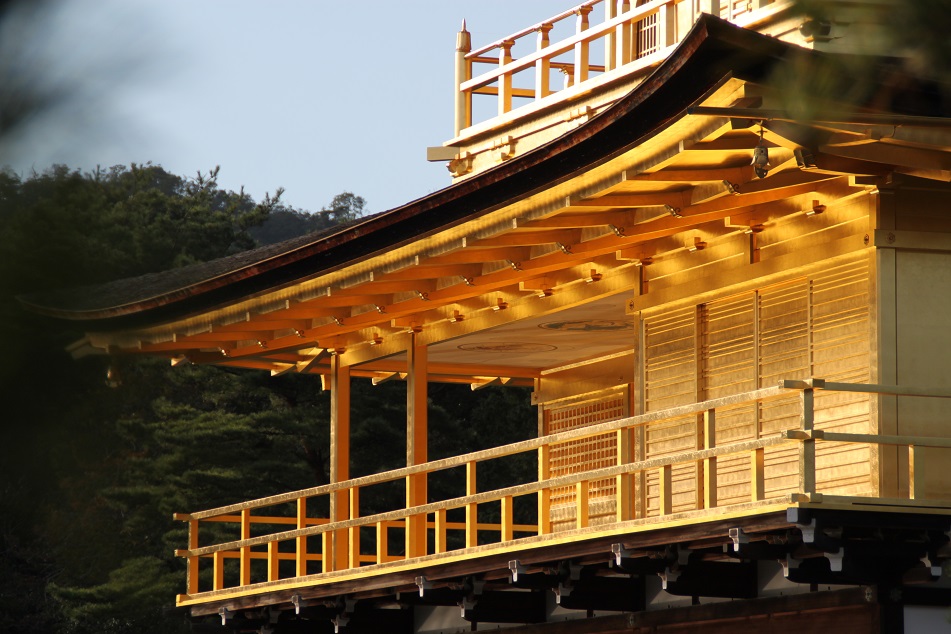
Despite Its Unrestrained Splendor, the Architecture of Kinkaku-ji is Unmistakably Japanese
